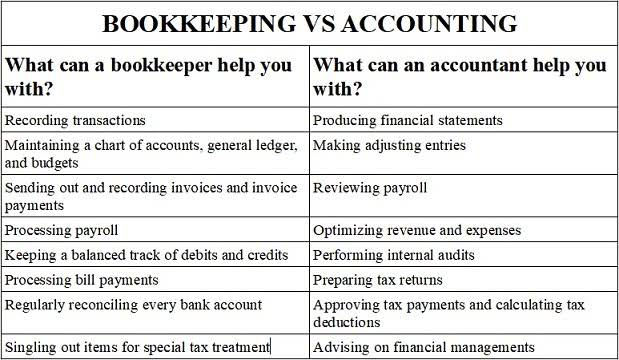
They include policies and procedures to prevent fraud, detect errors, and ensure compliance with laws and regulations. Key components are segregation of duties, transaction approvals, and regular audits. For example, segregating duties reduces fraud risk by ensuring no individual controls all aspects of a transaction. This type of software is designed to handle the unique accounting needs of nonprofits, automating many essential tasks and reducing the risk of errors. It becomes much easier to produce accurate financial statements that meet compliance requirements.
What Are Generally Accepted Accounting Principles (GAAP)?

Nonprofits must adhere to FASB’s ASC 958, which requires a statement of financial position, a statement of activities, and a statement of cash flows. Each provides a distinct perspective on the organization’s fiscal status, including asset management, revenue streams, and liquidity. Fund accounting is a system nonprofits use to ensure financial accountability by segregating resources into categories or “funds,” each with specific restrictions and purposes.
Tax Stuff (Don’t Snooze Through This Part!)
In addition, when all companies are required to follow the same guidelines, it becomes easier for investors, creditors, and lenders to easily review and understand a company’s actual financial health. Ratios like the program expenses to total expenses can help donors understand how much of their money directly supports your mission. This includes money from donors, loans from banks, and cash paid out for things like loan repayments or distributing funds to your projects. The main goal of the not-for-profit income statement is to show how well your nonprofit is doing financially.
- It provides insights into the organization’s liquidity and its ability to meet short-term obligations.
- Nonprofit accounting standards differ from for-profit accounting standards because they consider nonprofits’ objectives and operational focus.
- GAAP, while somewhat complicated, is a critical tool available to nonprofit organizations.
- Plus, these contributors have the right to sue your nonprofit for misuse of funds if you don’t respect their official wishes—another way GAAP and legal requirements for nonprofits align.
- Apart from insightful data, this section is all about telling real-life impact stories that happen thanks to your funding.
Best practices for nonprofit financial reporting
Nonprofit financial reports are essential for demonstrating transparency and accountability. This statement includes different reports and disclosures that give stakeholders a good understanding of how funds are used. A nonprofit financial statement is a snapshot of how your nonprofit has been doing with its money over a certain period, like a year or a quarter.
Providing financial tools and fundraising
Accountants involved in fund accounting keep track of the restrictions that are placed on each revenue source to ensure the funds are used properly and assist in preparing for the annual bookkeeping audit. Nonprofit organizations that receive revenue through public and private sources of funding use the system of fund accounting rather than traditional business methods of accounting. Fund accounting refers to the management and allocation of revenue received by nonprofits and the restrictions, or designations that are placed on those sources of revenue. Yes, using nonprofit-specific accounting software can greatly help to ensure compliance with GAAP and other nonprofit accounting standards.

Trusted worldwide by
Donor and fundraising highlights are all about shouting Certified Bookkeeper out your biggest supporters and most successful events. If expenses have risen, explain the reasons and how they align with your mission and plans. Examples include interest earned from savings or investments, rent from leasing out property, any special partnerships or royalties, and income from ads or sponsorships. They can also receive tax-deductible donations, encouraging more people to give.


GAAP includes definitions of accounting concepts and principles, as well as industry-specific rules. The main purpose of GAAP is to ensure that financial reporting is transparent and consistent from one organization to another. Nonprofits in the United States are generally required to file an annual information return, known as Form 990, with the IRS. Form 990 provides a comprehensive overview of the organization’s financial activities and is essential for maintaining tax-exempt status. Professional associations such as the National Council of Nonprofits and the Association of Fundraising Professionals offer valuable training sessions, webinars, and publications focused on compliance issues. These organizations often provide templates and checklists that can simplify the process of gathering necessary information for disclosure.
- By handling your nonprofit’s accounting responsibly, you’ll earn the trust of donors and foundations — and more easily accomplish your goals.
- It also frees up valuable time for staff to focus on core mission activities.
- Using nonprofit accounting profits can help streamline financial reporting processes, minimize error, and ensure consistency across reports.
- However, while these terms are often used interchangeably, they encompass distinct functions within financial management.
- For instance, rent might be allocated based on the square footage each program occupies.
- Furthermore, engaging with legal counsel or compliance experts who specialize in nonprofit law can provide tailored advice and ensure that organizations remain compliant with evolving regulations.
- However, nonprofits receive generous tax breaks and must be accountable to their donors.
Statement of functional expenses
- Nonprofits in the United States are generally required to file an annual information return, known as Form 990, with the IRS.
- They are guidelines that govern the financial reporting of all nonprofit organizations.
- In many cases, companies will run both GAAP and non-GAAP financial statements, which are often used internally.
- The major difference between GAAP and non-GAAP reporting is the level of consistency across multiple companies.
- It provides a snapshot of the organization’s financial position at a specific point in time.
Since most donors aren’t financial experts, they might not understand financial jargon or complex reports. The expenses statement helps you see how well you’re managing your resources and whether your spending aligns with your mission. So, while both types of organizations keep track of their finances, they report and use that money differently. Financial statements allow the board see how well you’re sticking to the budget and if everything follows accounting rules. Your board members need to keep an eye on your nonprofit’s finances, but they don’t have to become finance pros to do this. Knowing the ins and outs of your nonprofit’s finances helps you make better decisions.
The second method, functional expense allocation, is based on how each expenditure impacts your mission. Once you have viewed this piece of content, to ensure you can access the content most relevant to you, please confirm your territory. GAAP for Nonprofits PwC refers to the US member firm or one of its subsidiaries or affiliates, and may sometimes refer to the PwC network. This content is for general information purposes only, and should not be used as a substitute for consultation with professional advisors.